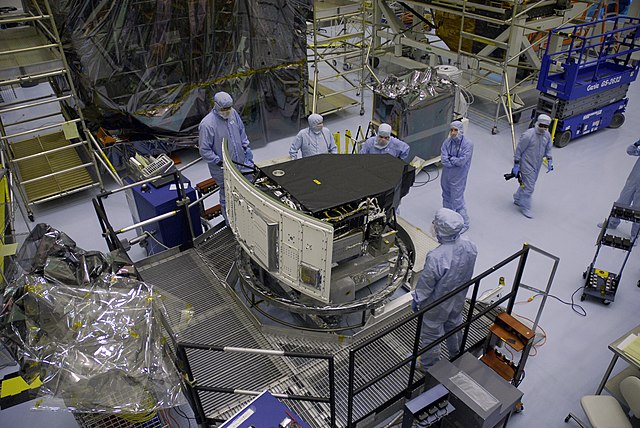The Wide Field Camera 3 (WFC3) is the Hubble Space Telescope's last and most technologically advanced instrument to take images in the visible spectrum. It was installed as a replacement for the Wide Field and Planetary Camera 2 during the first spacewalk of Space Shuttle mission STS-125 on May 14, 2009.
The Wide Field Camera 3 being prepared for its launch aboard STS-125
The Butterfly nebula imaged by WFC3 in 2009
WFC3 infrared view of the Horsehead nebula
WFC3 view of Mystic Mountain in the Carina Nebula
The Hubble Space Telescope is a space telescope that was launched into low Earth orbit in 1990 and remains in operation. It was not the first space telescope, but it is one of the largest and most versatile, renowned as a vital research tool and as a public relations boon for astronomy. The Hubble telescope is named after astronomer Edwin Hubble and is one of NASA's Great Observatories. The Space Telescope Science Institute (STScI) selects Hubble's targets and processes the resulting data, while the Goddard Space Flight Center (GSFC) controls the spacecraft.
Seen in orbit from the departing Space Shuttle Atlantis in 2009, flying Servicing Mission 4 (STS-125), the fifth and final Hubble mission.
Astronaut Owen Garriott working next to Skylab's crewed solar space observatory, 1973
Lyman Spitzer played a major role in the birth of the Hubble Space Telescope project.
Nancy Grace Roman with a model of the Large Space Telescope that was eventually developed as the Hubble Space Telescope. While listed as a 1966 photo, this design was not the standard until the mid-1970s.








